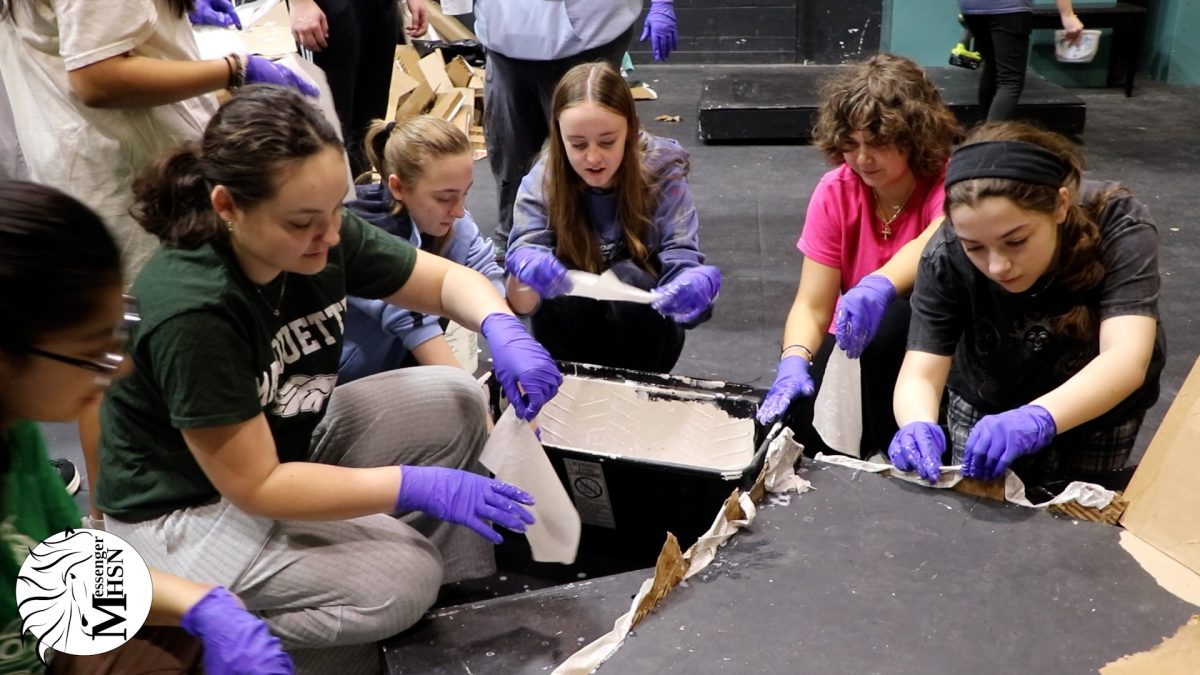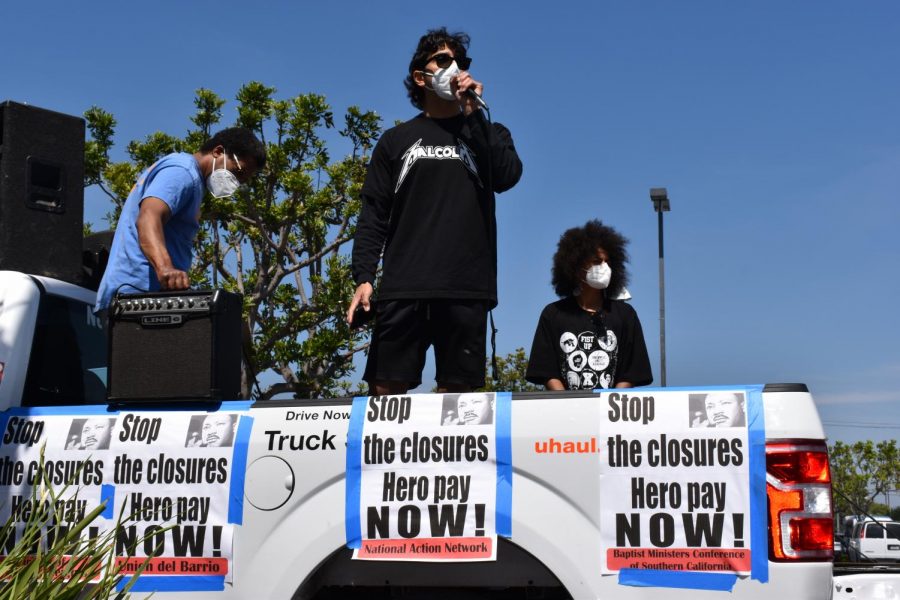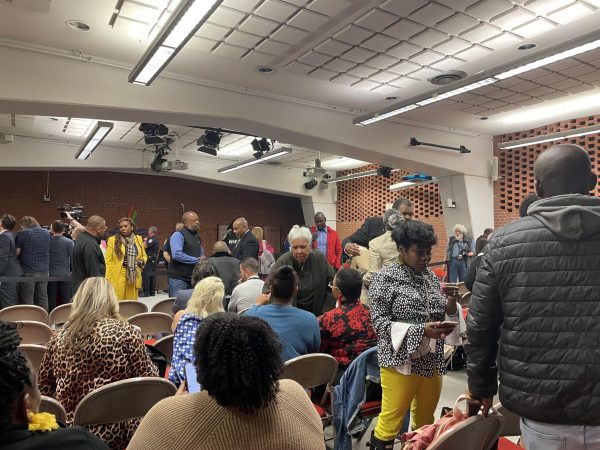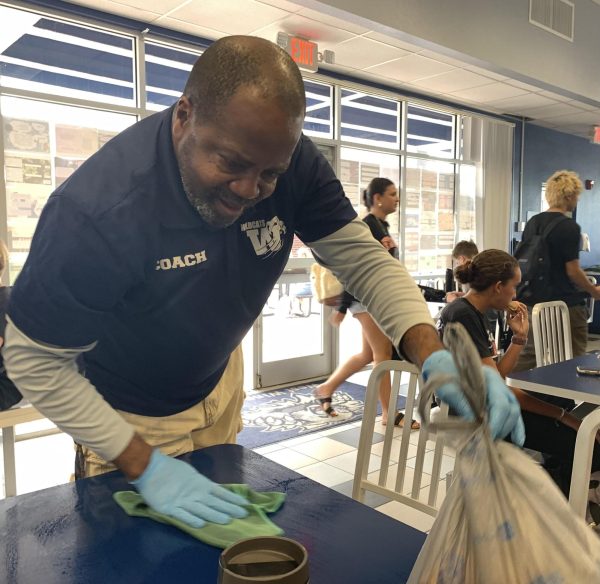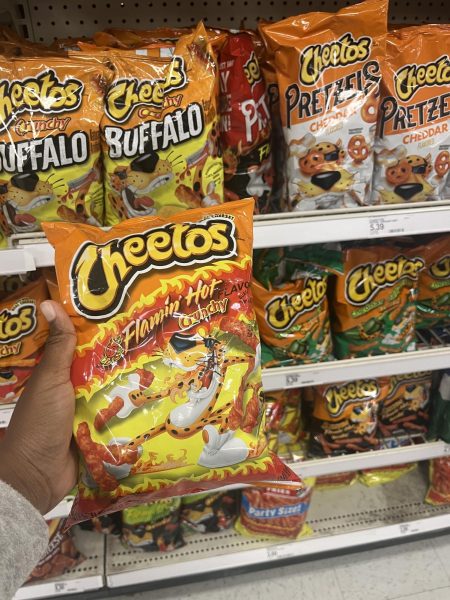Local governments broadly adopt hazard pay mandates
2c / ufcw770 / Flickr / CC BY 2.0
A speaker stands on a truck bed in California, addressing a crowd that had gathered for a protest in support of hazard pay mandates.
April 16, 2021
Despite the increase in COVID-19 vaccine distribution and local residents anticipating a return to a greater sense of normalcy, Bay Area governments are considering and implementing hazard pay mandates for grocery and drugstore workers.
In a movement that spread quickly in the first few months of 2021, union workers and government officials in numerous California cities have advocated for increases in hourly pay to compensate grocery and drugstore workers for the enhanced risks they undertake at their jobs as a result of the pandemic.
A version of the policy has been implemented in all three major Bay Area cities – San Francisco, Oakland, and San Jose – as well as Santa Clara County. More locally, San Mateo recently passed an emergency ordinance to ease the economic burden of the COVID-19 pandemic, while San Carlos and Belmont both decided against imposing a hazard pay requirement in March. (To read more about San Carlos’ rejection of a hazard pay mandate, click here.) This week, Redwood City became the latest municipality in San Mateo County to approve a temporary hazard pay ordinance.
San Mateo’s Unanimous Decision
The San Mateo ordinance requires large grocery stores and drugstores in that city to provide their workers with hazard pay of $5 per hour in addition to their hourly wages. For the average drugstore or grocery worker, that hazard pay reflects a 35-40% increase in their hourly wage. The San Mateo ordinance also applies to stores with over 750 employees nationwide and 10% of their floor space to selling food.
Passed on March 1, 2021, with a unanimous vote, the San Mateo councilmembers lodged their strong support for the ordinance. Having spearheaded the mandate, Councilmember Diane Papan of San Mateo led the effort to support grocery and drugstore workers during the spring and summertime.
Grocery and drugstore workers have suffered from constant exposure to customers, and companies such as Walgreens and Kroger neglected to reinstate hazard pay after the spring and summer months of 2020. While a small percentage of national corporations have continued their policies of hazard pay, many have offered bonuses during the holiday or added compensation for those who administer the vaccine, an integral step in America’s return to normalcy.
In a written statement, Joseph Goode, Senior Director of Corporate Communications at CVS Health, noted that bonuses were provided at the beginning of the pandemic to “demonstrate [CVS Health’s] appreciation to colleagues who continue to serve patients and customers during a time of great uncertainty.” Goode also drew attention to the fact that CVS Health provided $250 bonuses to nearly 250,000 employees at the beginning of the pandemic, and it has recently implemented an increase of $2 per hour in the salaries of pharmacy technicians administering COVID-19 immunizations.
Despite these efforts, Papan did not feel as if private corporations were being proactive enough, which is why she sought to compensate workers for the undue risks they continue to face during their daily jobs.
Papan said, “They weren’t all [providing hazard pay], so we had to come up with some sort of uniform endeavor. I felt that the stores conceded that there was a hazard and paid it initially, so it begs the questions as to why it stopped.”
The ordinance notably covers workers from local drugstores or grocery stores, but it exempts similar industries from having to abide by the mandate.
Stressing the importance of the grocery stores and drugstores to residents, Papan said, “Everyone needs food. Food was considered a frontline job in the direct pipeline to keep people going during the pandemic, so that’s why we singled out [those industries].”
When explaining her logic for providing grocery and drugstore workers with government-mandated hazard pay, Papan highlighted the difference in the nature of frontline workers’ jobs. According to Papan, a grocery worker is exposed to about 250 people during a full shift of eight hours, and COVID-19 exposure was never contemplated by those workers when they took the job.
Papan said, “I felt quite strongly that when you signed up to be a grocery or drugstore worker, many didn’t necessarily sign up for that kind of risk. I mean, it’s one thing to work in the medical industry, where you know there could be a risk, but not when you’re doing this sort of work.”
As many small, local businesses ceased to exist during the pandemic, the council was acutely aware of the fact that the increased wages could spell financial ruin for smaller stores in their municipality. Papan explained the decision to set the standard to only affect businesses with at least 750 employees nationwide.
“[The council] does not want this to apply to small mom and pop stores. We also do not want it to apply to regional grocers who have already done quite a bit in terms of compensation; we would rather target the larger stores who have made record profits and have the resources,” Papan said.
In supporting essential workers in drugstores and grocery stores, Papan highlighted the council’s motivation to help workers as they navigate between their homes and a high-exposure workplace.
Papan said, “It’s one of the things I felt really proud of, supporting people who are in such high-exposure scenarios. It was the right thing to do.”
The Workers’ Plight
Buoyed by the success that San Mateo had with the implementation of the hazard pay ordinance, other cities in San Mateo County have pursued the ordinance. On March 8, Daly City implemented a hazard pay ordinance, and on March 16, Millbrae followed suit and adopted the policy.
After a long period of consideration, Redwood City’s city council became the latest Bay Area community to implement a hazard pay ordinance on April 12. This ordinance is set to expire on July 11 and includes many of the same provisions established in the San Mateo ordinance.
“This is important, and our community has been talking about it,” said Redwood City Councilmember Alicia Aguirre, the person who made the motion to adopt the ordinance during the meeting. “As leaders in San Mateo County, I don’t want to be behind.”
Concluding her argument for the passing of the ordinance, Vice Mayor Giselle Hale called attention to the important role grocery workers play in the community when keeping stores open during the pandemic.
“These are the people who are truly at the front line. It’s the bottom of Maslow’s hierarchy,” Hale said. “It’s giving you food so you can eat during this pandemic.”
This story was originally published on Scot Scoop News on April 15, 2021.




























![IN THE SPOTLIGHT: Junior Zalie Mann performs “I Love to Cry at Weddings,” an ensemble piece from the fall musical Sweet Charity, to prospective students during the Fine Arts Showcase on Wednesday, Nov. 8. The showcase is a compilation of performances and demonstrations from each fine arts strand offered at McCallum. This show is put on so that prospective students can see if they are interested in joining an academy or major.
Sweet Charity originally ran the weekends of Sept. 28 and Oct. 8, but made a comeback for the Fine Arts Showcase.
“[Being at the front in the spotlight] is my favorite part of the whole dance, so I was super happy to be on stage performing and smiling at the audience,” Mann said.
Mann performed in both the musical theatre performance and dance excerpt “Ethereal,” a contemporary piece choreographed by the new dance director Terrance Carson, in the showcase. With also being a dance ambassador, Mann got to talk about what MAC dance is, her experience and answer any questions the aspiring arts majors and their parents may have.
Caption by Maya Tackett.](https://bestofsno.com/wp-content/uploads/2024/02/53321803427_47cd17fe70_o-1-1200x800.jpg)
![SPREADING THE JOY: Sophomore Chim Becker poses with sophomores Cozbi Sims and Lou Davidson while manning a table at the Hispanic Heritage treat day during lunch of Sept 28. Becker is a part of the students of color alliance, who put together the activity to raise money for their club.
“It [the stand] was really fun because McCallum has a lot of latino kids,” Becker said. “And I think it was nice that I could share the stuff that I usually just have at home with people who have never tried it before.”
Becker recognizes the importance of celebrating Hispanic heritage at Mac.
“I think its important to celebrate,” Becker said. “Because our culture is awesome and super cool, and everybody should be able to learn about other cultures of the world.”
Caption by JoJo Barnard.](https://bestofsno.com/wp-content/uploads/2024/01/53221601352_4127a81c41_o-1200x675.jpg)



